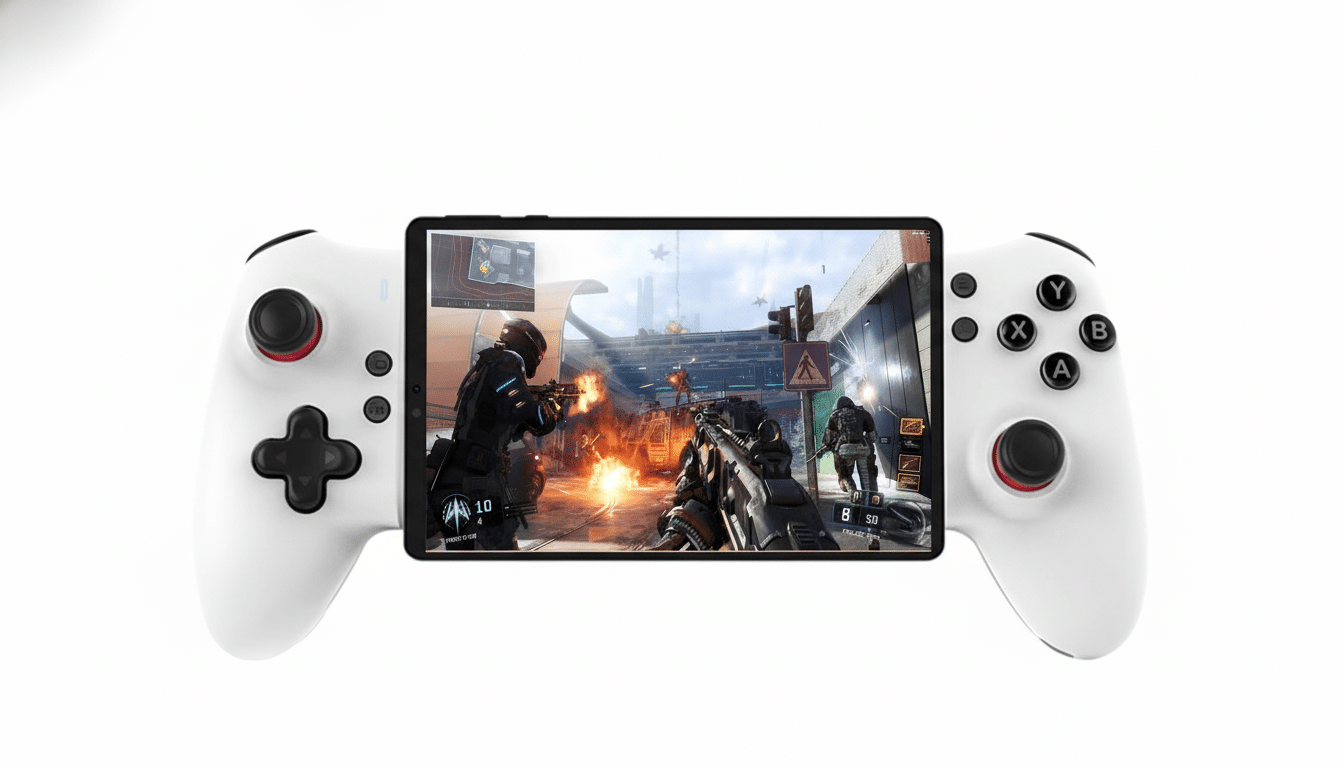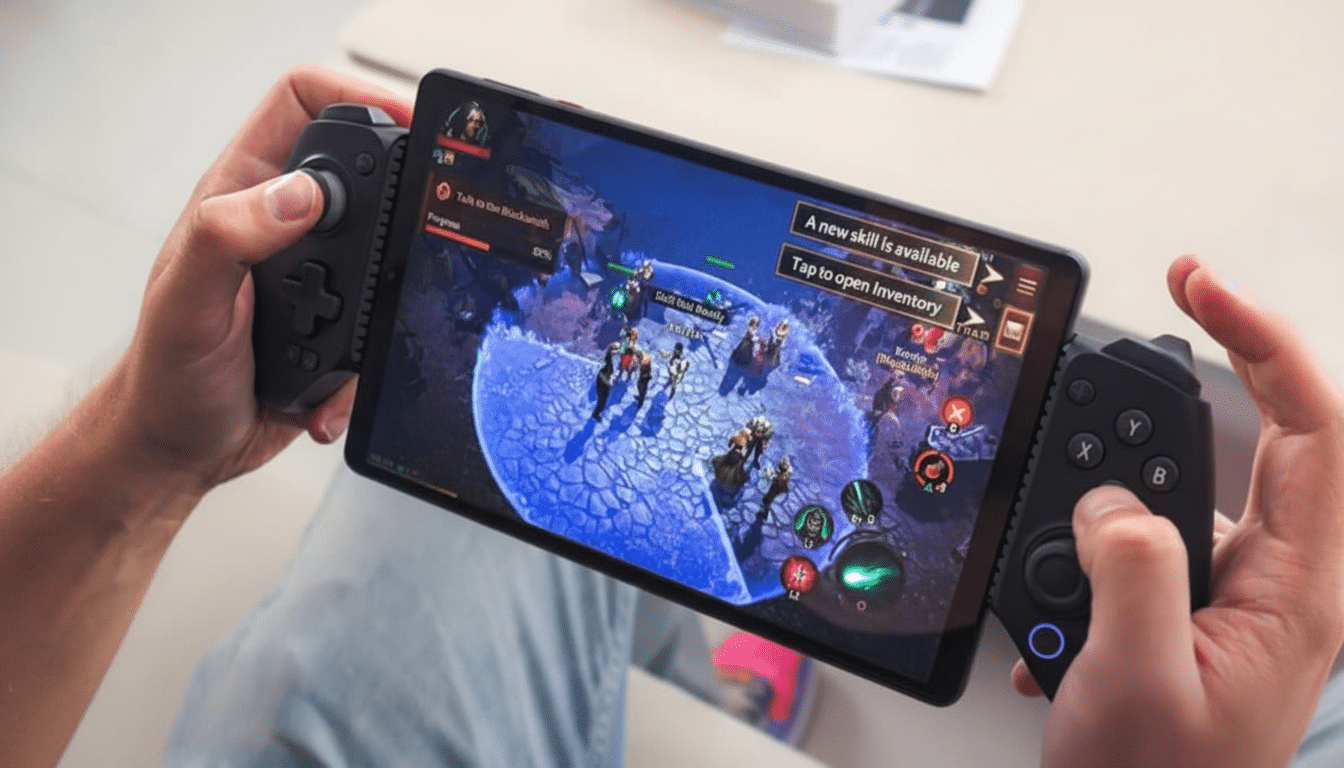Headwolf’s Titan 1 is a dedicated Android gaming tablet that emphasizes where you play, and not just what you play. It’s got a high-refresh display, loads of silicon, and robust cooling, and first-party controller support, which reads like a checklist of what mobile gamers have been looking for in a portable slate.
Amid a sea of tablets that try to do everything, there’s real appeal in the focused device. Analyses from data.ai and IDC show that mobile games already account for more than half of global player spending, and the Titan 1 is a compelling statement that an Android tablet may be the most versatile way to tap into that overwhelming ecosystem—native titles, emulation, and cloud services alike.

Why this compact tablet form factor hits just right
The Titan 1’s 8.8-inch footprint strikes a bit of a Goldilocks note: comfortably bigger than your average phone, giving you some meaningful screen real estate to work with, but not as heavy as a standard 11-inch slab.
At 7.9mm thick and weighing in at around 325g, this feels more like a premium e-reader than it does a laptop replacement—which matters when you’re grinding through a battle pass or clearing a dungeon on the train.
This size also has an advantage for gaming in landscape without feeling cramped and puts additional room to the left and right of on-screen controls in shooters and MOBAs. For players who prioritize portability yet hate to compromise, that’s the most banner headline feature.
High-Refresh Display and Some GPU Headroom
The Titan 1 has a 2.5K panel capable of hitting up to 144Hz, coming in at an eye-watering 349ppi.
The company claims 500 nits of brightness with anti-glare and anti-blur treatments, which should keep visuals legible in direct sunlight and minimize blurring during fast action—helpful for twitchy titles where clarity is tied to reaction time.
Powering the action under the hood is a MediaTek Dimensity 8300 together with a six-core ARM graphics block and 12GB of RAM. The GPU supports hardware-accelerated ray tracing and variable rate shading, two features that are becoming more common in higher-end Android devices, Headwolf says. Real-world implications are simple enough; popular games such as Call of Duty: Mobile, PUBG Mobile, and the Asphalt series now have access to high frame-rate modes, while emulators and cloud-based services will be able to benefit from the additional headroom.
Storage lands at 256GB of quick UFS 3.1, with expansion through microSD up to 2TB and optional 12GB of virtual RAM for multitasking headroom. For huge installs — think Genshin Impact, Honkai: Star Rail, a library of offline maps — that capacity is more than just a nice-to-have.

Cooling and Battery Fit For Marathon Sessions
The performance is only as good as the thermals. The Titan 1 combines CPU cooling gel, double-layer superconducting graphene, and a vapor chamber to maintain clocks under prolonged load. That’s not just spec sheet theater; anyone who has spent an afternoon watching frame rates sag after 15 minutes also knows how much of a difference a competent thermal design can make.
Powering the package is a 7,200mAh battery. Combine that with Wi‑Fi 6 for low-latency multiplayer and a 4G LTE option if you’re moving around, and you have something as much at home on fiber as for tether‑free roaming. It should get you the best battery life when adaptive refresh rates kick in, capping frames in settings when you’re looking to maximize run time instead of speed.
Controls and Ecosystem Are as Important as Specs
While input becomes the Achilles’ heel for most tablets, Headwolf does not skimp on this and offers up its very own controller that is designed to snugly fit in with the Titan 1’s housing. A nicely fitting grip means more than just less hand fatigue; it attacks the perennial friction of touch-only control schemes. If the software that powers mapping is as good as the hardware appears to be, it could be what makes this a curiosity versus an everyday driver.
The other ace up the sleeve is Android’s breadth. Outside of Google Play’s usual fare, the tablet is a natural fit for cloud platforms like GeForce Now and Xbox Cloud Gaming, local streaming through Steam Link or Moonlight, and a robust emulation scene covering myriad retro libraries. With 144Hz available, even streaming titles that support 120fps modes feel that bit slicker as long as your network can keep up.
Where the Titan 1 stands in an increasingly crowded field
Headwolf has yet to reveal its price, but it will arrive soon, with a dedicated crowdfunding campaign to boot. The competitive set is obvious: compact Android gaming tabs like Lenovo’s Legion Tab and high-refresh midrange slates that rely on third-party controllers for input. Handheld Windows machines offer more raw power at meaningful premiums, with heavier builds and shorter battery life.
Market context favors the strategy. IDC’s tablet tracker reports that Android slates are reclaiming share across a number of markets as consumers hunt for low-cost, entertainment-first computing devices — and data.ai still observes mobile as the biggest driver of game spending globally. In that sense, a tuned Android tablet with console-tier controls and dependable thermals seems right on trend.
If Headwolf manages to match the OS and get the controller right in hand (an open question at this stage), then the Titan 1 would give you pause for thought about where superb mobile gaming is best found. For those who are managing between native titles, cloud streaming options, and retro collections as well, it is a bit of a strong argument to suggest that the best mobile console might just be an Android tablet.

